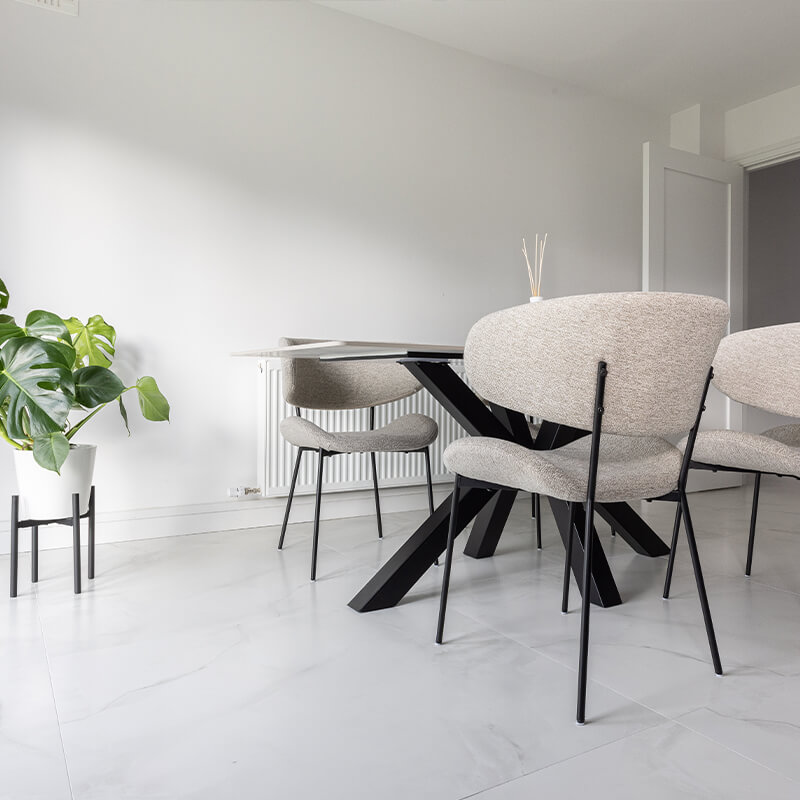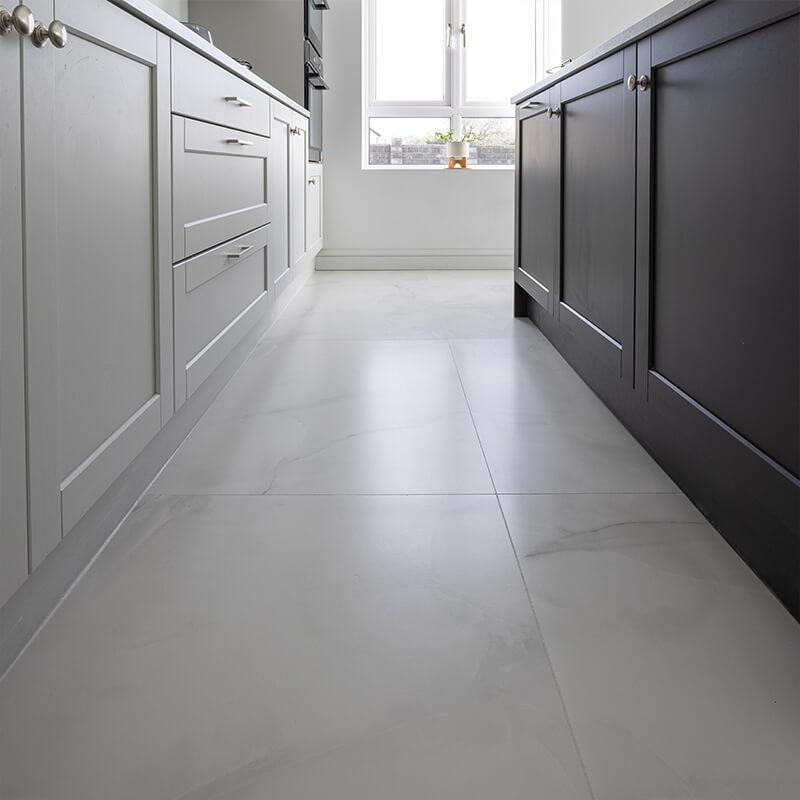Marble Effect Tiles vs Marble Tile: Key Differences
Marble Effect Tiles vs Marble Tile: Key Differences
- Introduction
- Definition of Marble Tiles
- Definition of Marble Effect Tiles
- Composition and Manufacturing (Marble Effect Tiles vs Marble Tile)
- Aesthetic Differences (Marble Effect Tiles vs Marble Tile)
- Durability and Maintenance (Marble Effect Tiles vs Marble Tile)
- Installation Process (Marble Effect Tiles vs Marble Tile)
- Cost Comparison (Marble Effect Tiles vs Marble Tile)
- Environmental Impact (Marble Effect Tiles vs Marble Tile)
- Use and Application (Marble Effect Tiles vs Marble Tile)
- Final Considerations (Marble Effect Tiles vs Marble Tile)
- Conclusion
- Why Tile Merchant?
Introduction
Marble tiles and marble effect tiles are two popular options for homeowners who want to add a touch of elegance to their homes. While both options may look similar at first glance, there are some key differences between the two that homeowners should be aware of before making a purchase.
Marble tiles are made from natural marble that has been quarried from the earth and cut into tiles of various sizes and shapes. Marble is a natural stone that is prized for its beauty and durability, making it a popular choice for flooring, countertops, and other surfaces. Marble tiles are available in a wide range of colours and patterns, and each tile is unique due to the natural variations in the stone.
Marble effect tiles, on the other hand, are made from ceramic or porcelain and are designed to mimic the look of natural marble. These tiles are created using advanced printing techniques that allow for intricate patterns and designs to be printed onto the surface of the tile. While marble effect tiles may look similar to natural marble, they are typically more affordable and easier to maintain, making them a popular choice for homeowners who want the look of marble without the high cost and upkeep.
| Marble Tiles | Marble Effect Tiles | |
|---|---|---|
| Composition | Natural stone made from pure marble | Made from ceramic or porcelain materials |
| Aesthetic | Each tile has its unique natural pattern and colour variations |
Tiles are designed to mimic the look of natural marble |
| Durability | More prone to damage and staining due to their porous nature |
Tiles have a protective layer that makes them resistant to stains and scratches |
| Installation | Tiles are heavy, they can crack or break easily if not handled properly |
Tiles are lighter and more durable than natural stone tiles |
| Cost | Expensive + more expensive to install | Way cheaper than real marble tiles |
| Eco Impact | Biodegradable and can be recycled | Produced using sustainable manufacturing processes and can be recycled |
| Application | Bathrooms, kitchens, living rooms, hallways, entryways, commercial spaces |
Bathrooms, kitchens, living rooms, hallways, entryways, commercial spaces |
Definition of Marble Tiles
Marble tiles are natural stone tiles that are made from pure marble. They are cut from large blocks of marble and then polished to a high shine. Marble tiles are known for their unique veining patterns and come in a variety of colours, including white, beige, grey, and black.
Marble tiles are highly durable and can last for many years with proper care. They are also heat-resistant, making them ideal for use in kitchens and bathrooms. However, they are porous and can stain easily, so it is important to seal them regularly to prevent damage.
Marble tiles are often used in high-end homes and commercial buildings due to their luxurious appearance. They are commonly used for flooring, walls, and countertops.
Here are some key features of marble tiles:
• Natural stone
• Unique veining patterns
• Durable and heat-resistant
• Porous and requires regular sealing
• Luxurious appearance
• Commonly used for flooring, walls, and countertops.

Definition of Marble Effect Tiles
Marble effect tiles are ceramic or porcelain tiles that are designed to mimic the appearance of natural marble. These tiles are created using advanced printing technology that allows for the replication of the intricate veining and patterns found in natural marble.
Unlike real marble tiles, marble effect tiles are much more affordable and easier to maintain. They are also available in a wide range of colours and designs, making them a versatile option for a variety of interior design projects.
Marble effect tiles are available in a variety of finishes, including polished, honed, and matte.
Polished marble effect tiles have a glossy finish that reflects light, while honed tiles have a more matte appearance. Matte marble effect tiles have a non-reflective surface that is ideal for creating a more subtle look.
Overall, marble effect tiles are an excellent choice for those who want the look of natural marble without the high cost and maintenance requirements. They are durable, easy to clean, and available in a wide range of colours and designs to suit any interior design project.



Composition and Manufacturing (Marble Effect Tiles vs Marble Tile)
Marble tiles are made from natural marble stone that is cut into desired sizes and shapes.
Marble is a metamorphic rock that is formed from the recrystallization of limestone under high pressure and temperature. Marble tiles are available in various colours and patterns, depending on the type of marble used.
On the other hand, marble effect tiles are made from ceramic or porcelain materials that are designed to look like marble. These tiles are manufactured by printing a high-resolution image of marble onto the surface of the tile and then applying a glaze to protect the image.
Marble tiles are more expensive than marble effect tiles due to the cost of sourcing and processing natural marble. Marble effect tiles are a cost-effective alternative to natural marble and offer a similar aesthetic appeal.
It is important to note that while marble effect tiles can look very similar to natural marble, they do not have the same physical properties.
Natural marble is a porous material and can be prone to staining and scratching, while marble effect tiles are non-porous and more resistant to damage.
In summary, marble tiles are made from natural marble stone, while marble effect tiles are made from ceramic or porcelain materials designed to look like marble. Marble tiles are more expensive but offer the unique beauty of natural marble, while marble effect tiles are a cost-effective alternative that offers similar aesthetics with more durability


Aesthetic Differences (Marble Effect Tiles vs Marble Tile)
When it comes to aesthetics, there are some notable differences between marble tiles and marble effect tiles. Natural marble comes in a limited range of colours and patterns, which may restrict customers seeking a broader variety for their interior design projects.
Marble tiles are made from natural marble, which means that each tile has its unique natural pattern and colour variations. This gives them an authentic and luxurious look that cannot be replicated by any other material.
Marble tiles are available in various finishes, including polished, honed, and brushed, which can affect their appearance and texture.
On the other hand, marble effect tiles are made from porcelain or ceramic and are designed to mimic the look of natural marble. They are available in a range of colours and patterns, and some even have a gloss finish that can enhance their resemblance to real marble. However, marble effect tiles lack the natural variations and unique patterns of real marble, which can make them look somewhat uniform and less authentic.
Overall, while both marble tiles and marble effect tiles can add a touch of elegance to any space, the aesthetic differences between the two are apparent. Marble tiles offer a unique and luxurious look that cannot be replicated, while marble effect tiles offer a more uniform and consistent appearance.
Durability and Maintenance (Marble Effect Tiles vs Marble Tile)
When it comes to durability, both marble tiles and marble effect tiles are strong and long-lasting options. However, natural marble tiles are more prone to damage and staining due to their porous nature. This means that they require more maintenance and care than marble effect tiles.
Marble effect tiles, on the other hand, are made of porcelain or ceramic and have a protective layer that makes them resistant to stains and scratches. They are also easier to clean and maintain compared to natural marble tiles.
To keep natural marble tiles in good condition, it is recommended to seal them regularly to prevent stains and damage. They should also be cleaned with a pH-neutral cleaner to avoid etching or discolouration. Marble effect tiles, on the other hand, can be easily cleaned with a damp cloth and mild detergent.
In terms of durability and maintenance, both options have their pros and cons.
Natural marble tiles are more luxurious and offer a unique look, but require more care and maintenance. Marble effect tiles, on the other hand, are more practical and easier to maintain, but may not provide the same level of authenticity as natural marble tiles.


Installation Process (Marble Effect Tiles vs Marble Tile)
When it comes to the installation process, there are some differences between marble tiles and marble effect tiles.
Marble tiles are natural stone tiles that require special care during installation. They are heavy and brittle, which means they can crack or break easily if not handled properly. It is important to ensure that the surface where the tiles will be installed is level and clean. Any unevenness can cause the tiles to crack or break.
Marble tiles are typically installed using a thin-set mortar, which is a mixture of cement, sand, and water. The mortar is applied to the surface using a trowel, and the tiles are then placed on top of it. The tiles are spaced apart using spacers to ensure that they are evenly spaced. Once the mortar has dried, grout is applied to fill the gaps between the tiles.
Marble effect tiles, on the other hand, are easier to install. They are typically made from ceramic or porcelain, which makes them lighter and more durable than natural stone tiles. They can be installed using the same techniques as regular ceramic or porcelain tiles.
Marble effect tiles can be installed using a thin-set mortar or adhesive. The tiles are spaced apart using spacers, and once the adhesive has dried, grout is applied to fill the gaps between the tiles.
Overall, the installation process for marble effect tiles is simpler and less time-consuming than that of natural marble tiles.
Cost Comparison (Marble Effect Tiles vs Marble Tile)
When it comes to cost, marble effect tiles are generally cheaper than real marble tiles. This is because marble effect tiles are made from porcelain or ceramic, which are less expensive materials than natural marble.
The price of marble tiles can vary greatly depending on the quality and rarity of the marble. For example, Carrara marble, which is a popular choice for tiles, can range from €100 to €200 (or even more!) per square metre. In contrast, marble effect tiles can cost as little as €30 per square metre (price refers to the year 2024).
In addition to the initial cost, marble tiles can also be more expensive to install. Due to their weight and fragile nature, special care must be taken when handling and installing marble tiles. This can result in higher installation costs compared to marble effect tiles, which are lighter and easier to handle.
Overall, if cost is a major factor in your decision, marble effect tiles may be the better choice.
Environmental Impact (Marble Effect Tiles vs Marble Tile)
When it comes to environmental impact, both marble tiles and marble effect tiles have their pros and cons.
Marble tiles are a natural product, which means they are biodegradable and can be recycled. However, the extraction process for natural marble can be resource-intensive and can involve the use of heavy machinery and chemicals. This can result in environmental damage, including soil erosion and water pollution.
On the other hand, marble effect tiles are typically made from ceramic or porcelain, which are man-made materials. These materials are often produced using sustainable manufacturing processes and can be recycled. Additionally, marble effect tiles can imitate the look of natural marble without the need for quarrying, which can help to conserve natural resources.
It's worth noting that both types of tiles can have environmental benefits when used in sustainable building practices. For example, using marble tiles or marble effect tiles in a building's flooring can help to reduce the need for heating and cooling by providing thermal mass. This can help to reduce energy consumption and greenhouse gas emissions.
Overall, the environmental impact of marble tiles and marble effect tiles depends on a variety of factors, including the specific materials used, the manufacturing process, and the building practices in which they are used.

Use and Application (Marble Effect Tiles vs Marble Tile)
When it comes to use and application, the difference between marble tiles and marble effect tiles may not be significantly apparent. Both types aim to replicate the elegant appearance of natural marble.
Marble tiles are ideal for areas where a luxurious and elegant look is desired, such as bathrooms, kitchens, and living areas. They are also suitable for commercial spaces such as hotels and restaurants. Marble tiles are durable and long-lasting, but, remember, they do require regular maintenance to keep them looking their best.
On the other hand, marble effect tiles are a more affordable option that can still provide the same aesthetic appeal as natural marble tiles. They are often used in high traffic areas such as hallways, entryways or living rooms, as well as in bathrooms and kitchens. Marble effect tiles are easy to clean and maintain, making them a popular choice for busy households.
Overall, the choice between marble tiles and marble effect tiles depends on the desired look, budget, and application. Marble tiles are a luxurious and timeless option, while marble effect tiles offer a more affordable and practical alternative.
Final Considerations (Marble Effect Tiles vs Marble Tile)
When it comes to choosing between marble tiles and marble effect tiles, there are a few final considerations to keep in mind.
Firstly, it is important to consider the cost. Marble tiles are typically more expensive than marble effect tiles, so if budget is a concern, marble effect tiles may be the better option.
Secondly, it is important to consider the maintenance. Marble tiles require regular sealing and cleaning to keep them looking their best, whereas marble effect tiles are much easier to maintain.
Finally, it is important to consider the overall look and feel you are trying to achieve. While marble effect tiles can provide a similar look to real marble, they may not have the same depth and texture as natural marble tiles. Ultimately, the choice between marble tiles and marble effect tiles will depend on your individual needs and preferences. By considering factors such as cost, maintenance, and overall aesthetic, you can make an informed decision that will best suit your needs.
Conclusion
If you’d like to see marble tiles or marble effect tiles in person before you buy, pop into one of our showrooms for a chat.
We’ve got two showrooms in Dublin, and one in Ashbourne (Co. Meath). Alternatively, give us a call before 5 pm, seven days a week! Thanks for reading.



Why Tile Merchant?
Tile Merchant Ireland offers extremely competitive pricing on our entire range of tiles and likewise.
Tile Merchant stocks a huge range of wall and floor tiles and our prices are competitive for retail and trade. Our stock is widely available in our tile stores in Dublin and Ashbourne (Co. Meath) which are open 7 days a week.
Alternatively, if you’d prefer to shop our tiles online, we can supply you with samples delivered for free.
Read Tile Merchant Reviews on Trustpilot

Article written by Tile Merchant
Ireland's No. 1 Tile Specialist | Low Prices on Tiles. We stock thousands of wall and floor tiles at the most competitive prices in Ireland. FREE sample service and fast delivery.


